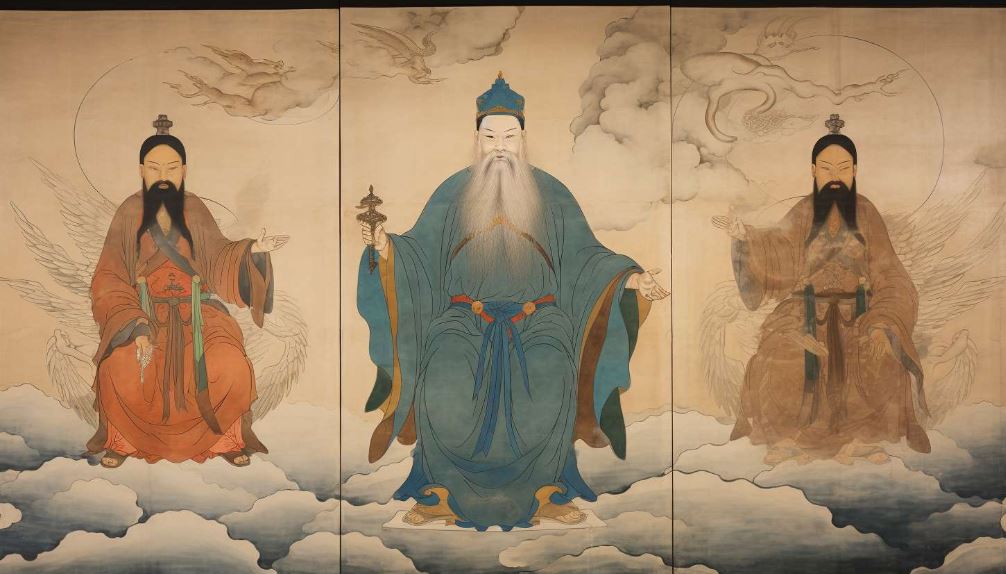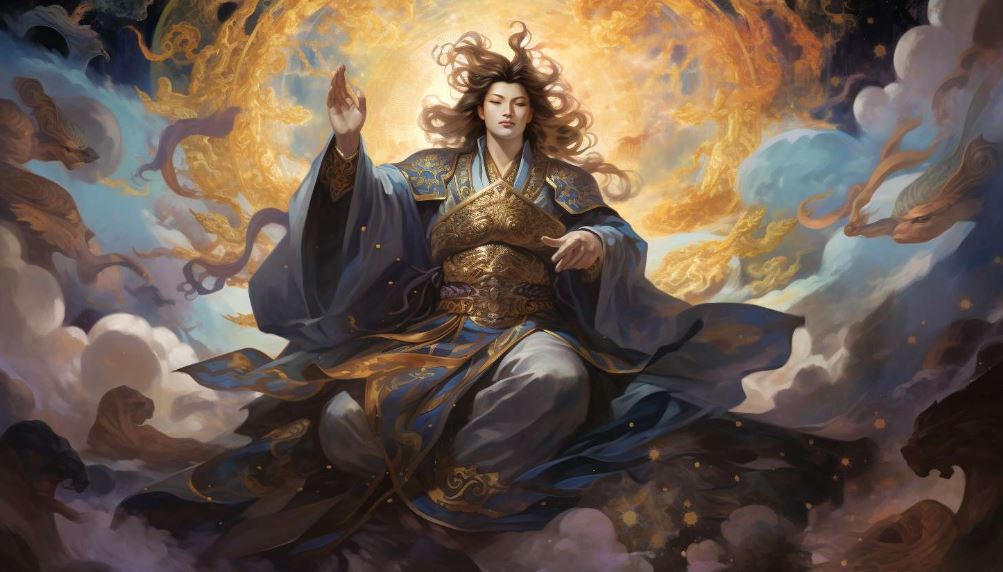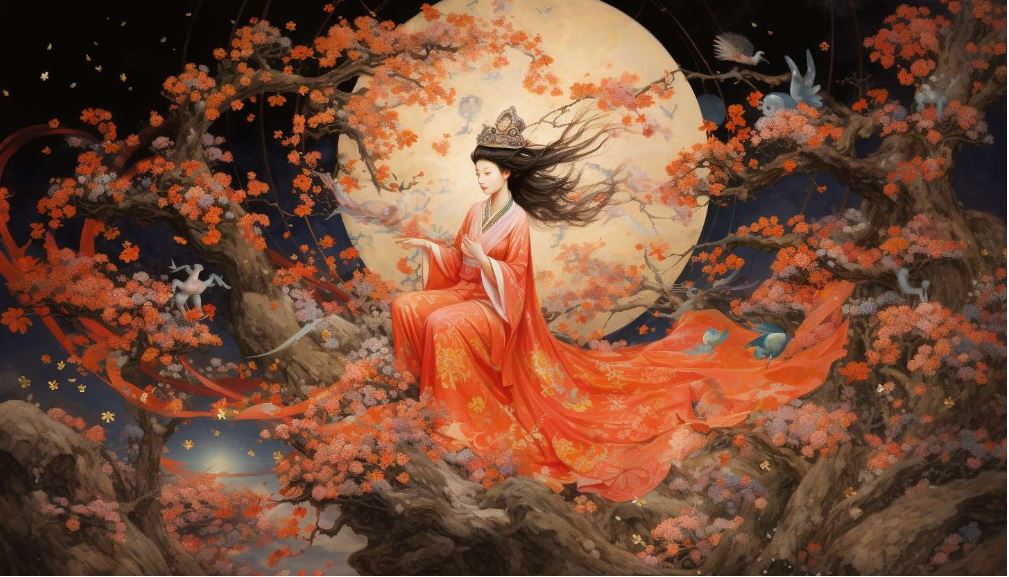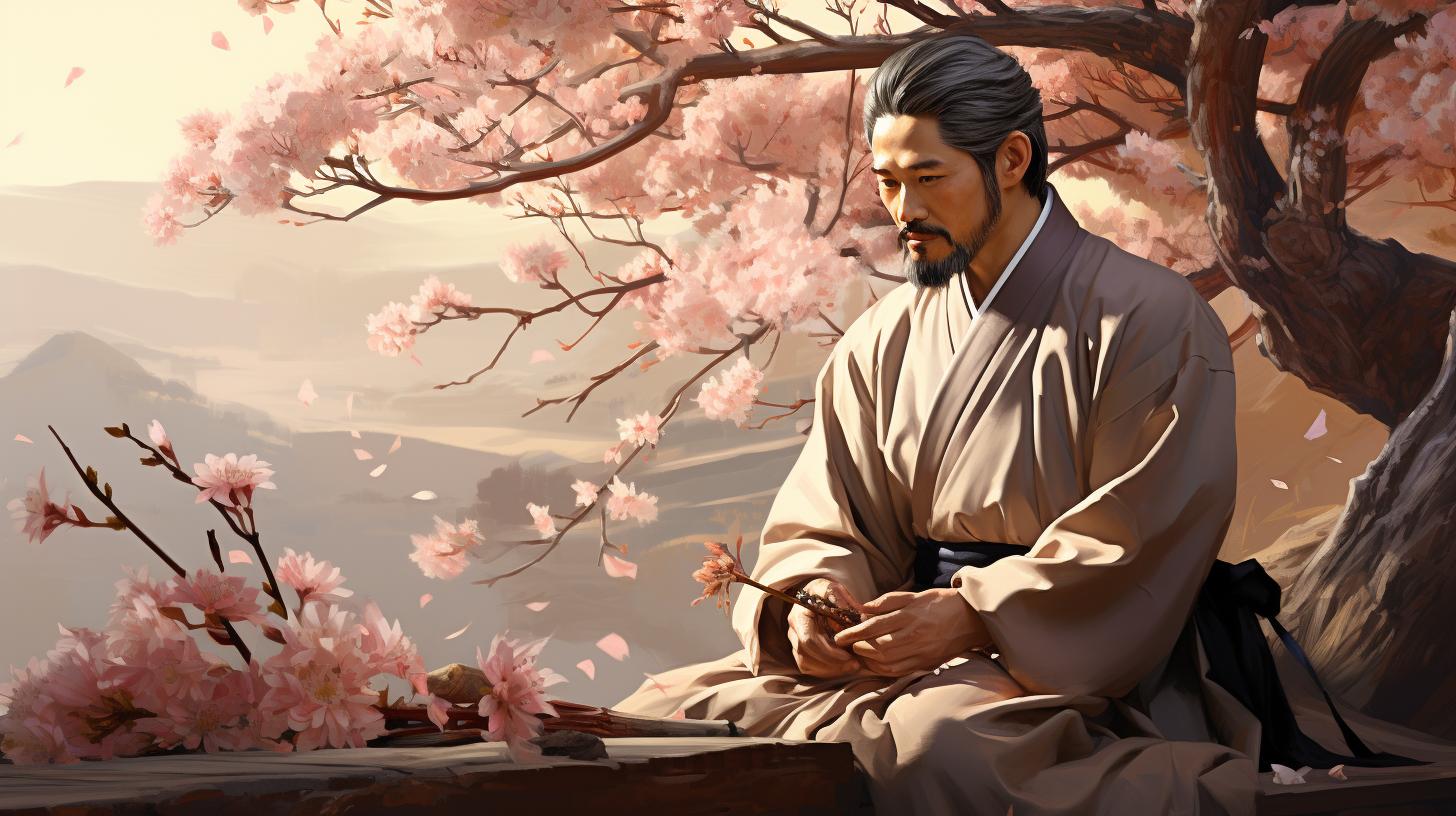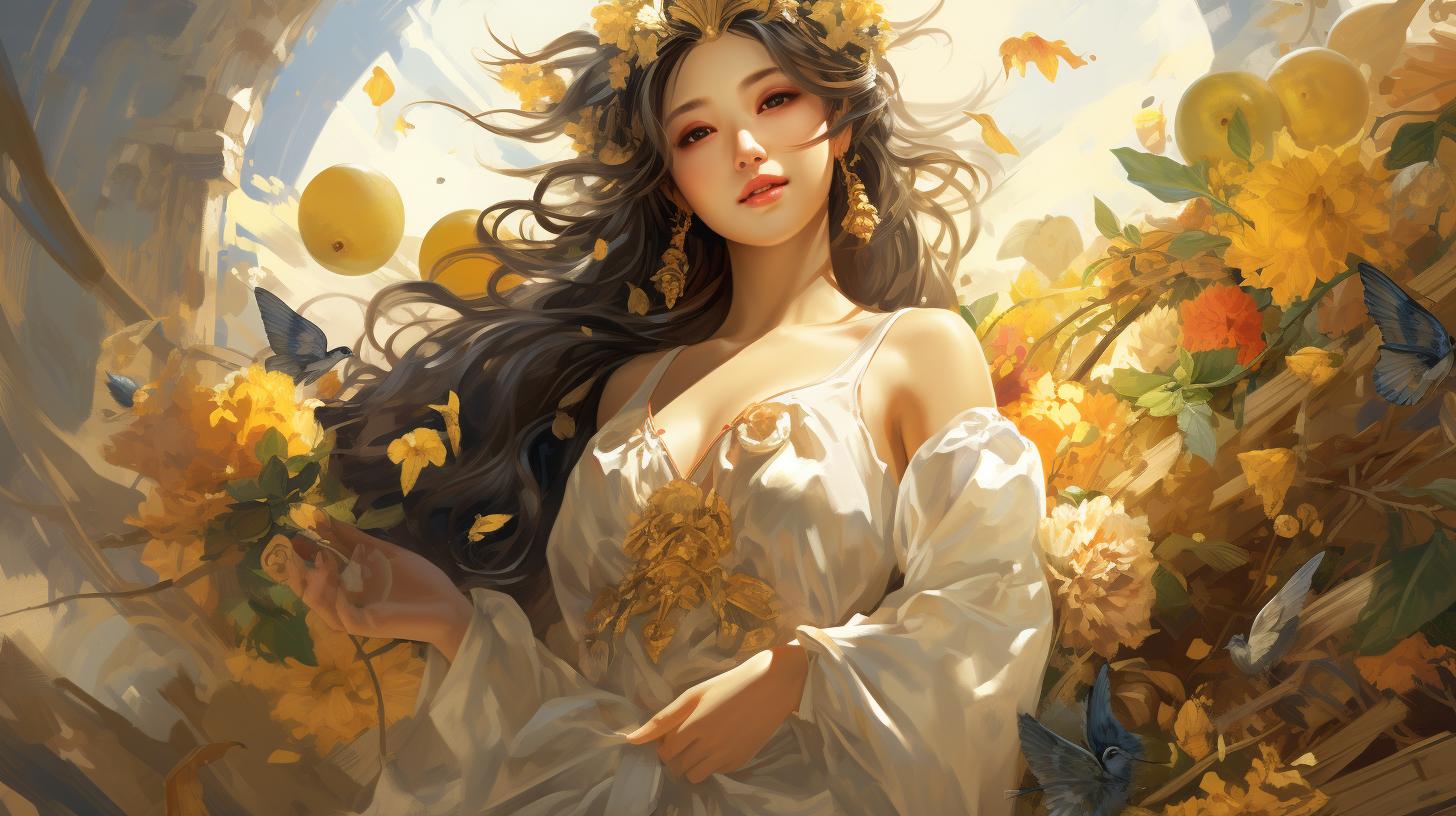Korean Sun God: Exploring the Mythology and Symbolism of Haemosu
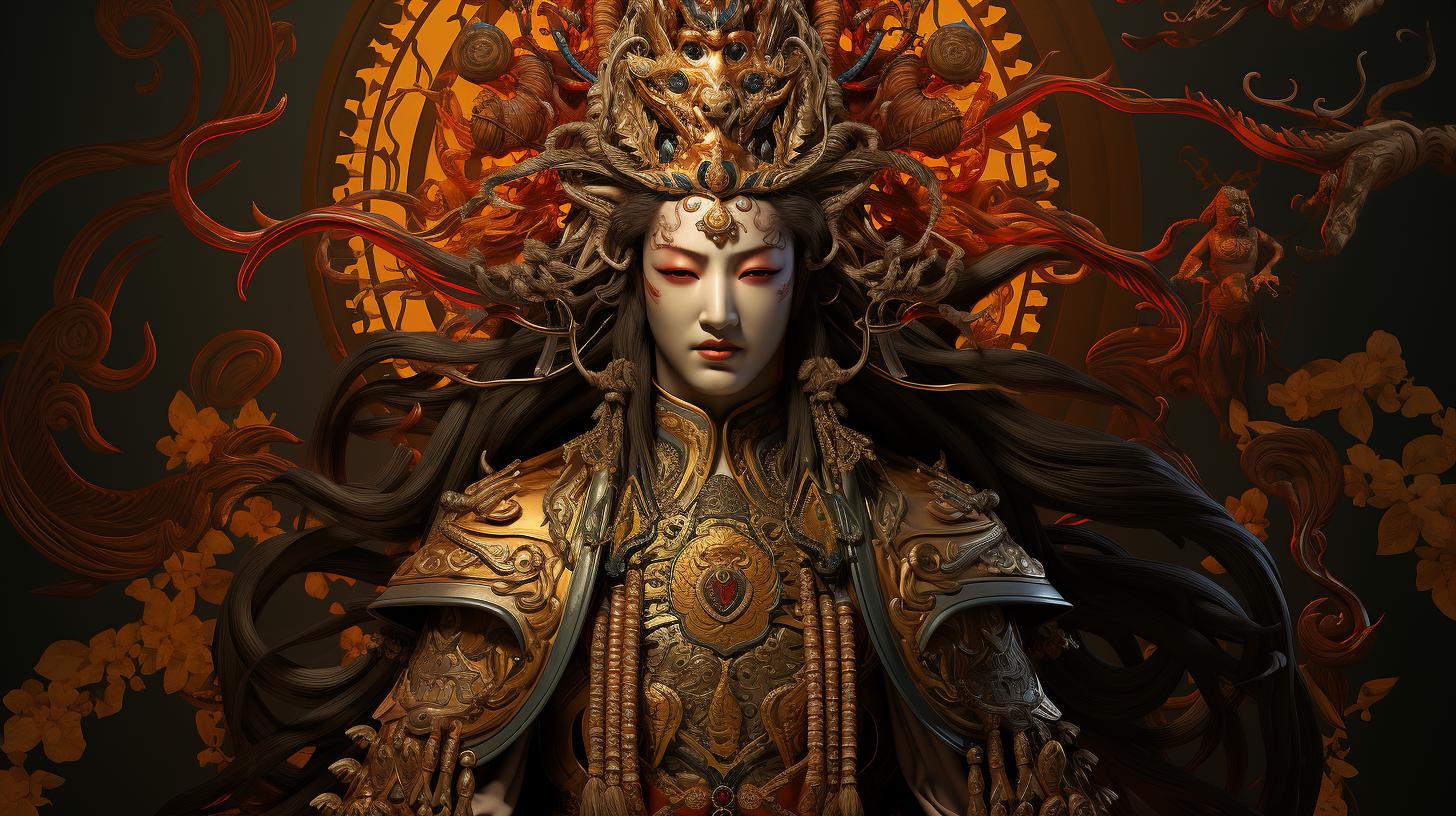
Korean Sun God mythology holds a significant place in Korean culture and history. Haemosu, the powerful Korean Sun God, plays a central role in the pantheon. Believed to descend from the heavens in a majestic chariot, Haemosu listens to the concerns of the people before ascending at sunset.
Legends surround Haemosu’s encounters with deities and his founding of the Buyeo Kingdom. Additionally, Korean mythology also highlights the role of the Sun Goddess, known for her radiant presence and enduring symbolism.
These mythological figures continue to hold cultural relevance in modern Korean society.
Overview of Korean Sun God Mythology
The Korean Sun God holds a significant place in the rich tapestry of Korean mythology. This section provides an exploration of the history, origins, and the role and significance of Sun Gods within Korean mythology.
Understanding the mythology surrounding these powerful deities offers insights into the cultural beliefs and practices of Korea.
History and Origins of the Korean Pantheon
The Korean pantheon boasts a diverse collection of gods and goddesses, each with their unique histories and origins. The origins of the Korean Sun God can be traced back to ancient times, intertwined with the rich folklore and ancient shamanic traditions of the Korean people.
These mythological roots are deeply rooted in the cultural heritage of Korea.
Role and Significance of Sun Gods in Korean Mythology
Sun Gods play a pivotal role in Korean mythology, symbolizing the power and life-giving essence of the sun. They are revered as divine beings who bring light, warmth, and energy to the world.
Additionally, these deities hold immense significance in celestial and agricultural domains, influencing the wellbeing of individuals, communities, and the natural environment.
- The Korean Sun God has a significant place within the rich tapestry of Korean mythology.
- These deities play a vital role in the celestial and agricultural domains.
- Sun Gods symbolize the power and life-giving essence of the sun.
- They are associated with rulership, fertility, and protection.
- Through various cultural expressions, Sun Gods hold a deep connection to the natural world.
Exploring the history and role of Sun Gods in Korean mythology provides a deeper understanding of the cultural heritage and traditions that continue to shape Korea today.
Haemosu: The Powerful Korean Sun God
Haemosu, the revered Korean Sun God, holds a significant role in the mythology and cultural traditions of Korea. This section delves into the various aspects and legends associated with Haemosu, shedding light on his profound significance.
Haemosu’s Descendence and Divine Abilities
Haemosu’s descent from the heavens in his majestic chariot, known as Oryonggeo, represents the dawn and dusk of the sun. His divine abilities are awe-inspiring, as he is capable of observing the concerns of the people during the day and returns to the celestial realm at sunset.
With his unique head adorned with crow feathers and wielding a powerful sword, Haemosu radiates strength and power.
Haemosu’s Role in the Korean Creation Myth
In the grand tapestry of Korean mythology, Haemosu plays a vital role in the creation of Korea itself. He is considered the founder of the Buyeo Kingdom, establishing a lasting legacy.
Through his divine presence and actions, Haemosu shapes the destiny of the Korean people.
Haemosu’s intricate family connections further highlight his importance in Korean mythology. As the son of the sky god and the father of the legendary figure Chumong, he navigates complex relationships within the pantheon.
Legends and Stories of the Korean Sun God
Haemosu’s Encounter with the Water Deity Habaek
One intriguing tale features Haemosu’s ill-fated desire to take Habaek’s three daughters as his wives. Despite successfully abducting the eldest, Yuhwa, Haemosu’s failure to follow the proper marriage rituals enraged Habaek.
An official ceremony was held, but Yuhwa managed to escape before Haemosu could return to the heavens. It was later revealed that Haemosu impregnated Yuhwa with a ray of sunlight while she resided in the king’s palace.
This union eventually led to the birth of their son, Chumong.
Haemosu’s Founding of the Buyeo Kingdom
Another notable legend revolves around Haemosu as the founder of the Buyeo Kingdom. With a unique crow-feathered head and wielding his powerful sword, Haemosu embarked on a significant mission. Riding upon a chariot pulled by five dragons, he established the mystical realm of Buyeo.
This kingdom played a vital role in Korean history, influencing the region for centuries.
Haemosu’s Symbolism and Representation in Art and Culture
Haemosu’s character holds deep symbolism and finds representation in various forms of art and culture. Artists adorn their depictions of Haemosu with his distinct crow-feathered headdress and mighty sword, symbolizing his divine power and the magnitude of his role as the Korean Sun God.
Paintings, sculptures, and theatrical performances often depict Haemosu riding his dragon-drawn chariot, emphasizing his celestial connection and his significance in Korean mythology.
These legends and stories surrounding the Korean Sun God continue to fascinate and inspire people of all ages. They not only provide a glimpse into the rich mythology of Korea but also highlight the profound cultural significance of Haemosu and his enduring impact on Korean society.
The Sun Goddess and her Role in Korean Mythology
The Sun Goddess holds a significant position in Korean mythology, embodying the radiant power and life-giving energy of the sun. Her mythological origins trace back to ancient times, where she is believed to have emerged as a celestial being.
Revered for her role in illuminating the world and bringing warmth, the Sun Goddess symbolizes vitality, abundance, and prosperity in Korean culture.
Mythological Origins and Significance of the Sun Goddess
The Sun Goddess is said to have emerged from the heavens, her dazzling presence captivating all who beheld her. Her arrival brought forth a new era of abundance and prosperity, as she bestowed her radiant light upon the land.
Throughout history, the Sun Goddess has represented the cycle of life, the changing seasons, and the continuous renewal of nature.
Legendary Tales Associated with the Sun Goddess
Various legends are associated with the Sun Goddess, reflecting her diverse attributes and influence on Korean mythological narratives. One such story tells of her compassion and empathy towards humanity, as she guides and protects those who honor her.
Other tales focus on her remarkable powers, such as the ability to heal wounds and bring fertility to the earth.
In one legendary tale, the Sun Goddess descends to earth to offer her guidance to a young prince who seeks wisdom and enlightenment. Through her teachings, the prince learns the value of harmony and balance within oneself and the world.
This story emphasizes the Sun Goddess’s role as a source of wisdom and enlightenment in Korean mythology.
Symbolism and Cultural Implications of the Sun Goddess
- The Sun Goddess symbolizes the life-giving energy and warmth that sustains all living beings.
- Her radiance represents enlightenment, knowledge, and spiritual illumination.
- She is associated with fertility, prosperity, and the bountiful harvest.
- The Sun Goddess embodies the nurturing and protective aspects of feminine energy.
- Her presence symbolizes hope, rejuvenation, and the cyclical nature of life.
The significance of the Sun Goddess extends beyond mythology and permeates Korean culture.
Her symbolism is widely used in various art forms, such as traditional paintings, sculptures, and even modern-day visual representations. Additionally, her influence can be observed in cultural practices, festivals, and rituals, where her presence is invoked to bring blessings, abundance, and good fortune.
Comparisons with Other Sun Gods in Different Mythologies
Korean Sun God Haemosu vs. Greek Mythology’s Apollo
When exploring the mythology of the Korean sun god Haemosu, it is interesting to draw comparisons with Apollo, a prominent figure in Greek mythology who also represents the sun. Both Haemosu and Apollo share a divine connection to the celestial sphere, embodying the radiant power and life-giving qualities associated with the sun.
While Haemosu is depicted as the founding deity of the Buyeo Kingdom and is often described as riding a unique chariot drawn by five dragons, Apollo is known for his association with archery, music, and poetry.
However, both gods hold positions of great importance within their respective mythologies and possess immense power over the sun.
One key difference between Haemosu and Apollo lies in their family relationships. Haemosu is the son of the sky god and the father of Chumong, who plays a significant role in Korean history.
On the other hand, Apollo is the son of Zeus and Leto and is widely known as a member of the Olympian pantheon.
Similarities and Differences with Sun Gods in Other Cultures
While the Korean sun god Haemosu and Greek sun god Apollo share similarities, it is intriguing to explore the similarities and differences between sun gods in other cultures as well.
Across various mythologies, sun gods are often portrayed as symbols of light, warmth, and life.
- Ra in Egyptian mythology: Like Haemosu and Apollo, Ra is a prominent sun deity associated with creation and the cycle of day and night.
- Inti in Incan mythology: Inti is the Incan sun god, revered as the ancestor of all humans.
He is believed to fuel the growth of crops and bestow prosperity.
- Surya in Hindu mythology: Surya is the solar deity in Hinduism, representing the surging energy and brilliance of the sun.
While the roles and characteristics of sun gods may vary across cultures, their significance as sources of light, warmth, and life remains prominent.
Exploring the similarities and differences between these diverse sun gods enriches our understanding of the universal reverence for the sun in various mythological traditions.
Enduring Significance of the Korean Sun God
The Korean Sun God, Haemosu, holds a profound influence on traditional Korean beliefs and practices. His divine presence is deeply embedded in various cultural rituals and ceremonies, symbolizing the celestial power of the sun.
Let’s explore the enduring significance of the Korean Sun God in different aspects:
Haemosu’s Influence on Traditional Korean Beliefs and Practices
Haemosu’s revered status in Korean mythology has significantly impacted traditional Korean beliefs and practices. He is worshipped as a deity embodying the sun’s life-giving energy and is associated with blessings, prosperity, and fertility.
In seasonal festivals and agricultural rituals, offerings are made to Haemosu to ensure a bountiful harvest and to seek his guidance in navigating life’s challenges.
Modern Interpretations and Representations of the Korean Sun God
In modern times, interpretations of the Korean Sun God have evolved to reflect contemporary perspectives. Artists, writers, and performers draw inspiration from Haemosu’s mythological tales to create contemporary artworks, literature, and theatrical productions.
These interpretations aim to keep the essence of Haemosu alive and relevant, bridging the gap between ancient mythology and the present.
Artistic Depictions
Artists explore various mediums to depict Haemosu’s majestic presence and his dramatic descent from the heavens. Paintings, sculptures, and digital art reflect his radiant aura and his chariot pulled by mighty dragons, capturing the awe-inspiring nature of the Korean Sun God.
Literary Adaptations
Writers and poets often delve into Haemosu’s mythical stories, using them as a source of inspiration for novels, poetry collections, and dramatic works. These literary adaptations not only preserve the legacy of the Korean Sun God but also introduce his captivating tales to new generations.
Theatrical Performances
Theatrical productions incorporate Haemosu’s mythology into captivating performances, combining traditional Korean music, dance, and storytelling techniques. These immersive experiences allow audiences to immerse themselves in the world of the Korean Sun God while appreciating the artistic beauty of the performances.
The Sun God’s Relevance in Contemporary Korean Society
The Korean Sun God, despite being rooted in ancient mythology, continues to hold relevance in contemporary Korean society. His symbolism transcends time, representing resilience, strength, and the cyclical nature of life.
The Sun God’s motifs and imagery can be found in modern architecture, fashion, and even popular culture, reaffirming his enduring legacy as a symbol of power and enlightenment.
Architectural Influences
Architects and urban planners often incorporate elements influenced by Haemosu’s iconic imagery in building designs and cityscapes. Structures adorned with sun-shaped motifs pay homage to the Korean Sun God, visually connecting the past with the present.
Fashion and Design
Fashion designers and artists draw inspiration from Haemosu’s vibrant persona, incorporating sun-related motifs and symbols into clothing, accessories, and decorative items. This fusion of traditional mythological elements with contemporary fashion reflects the ongoing relevance and adaptability of the Korean Sun God in modern aesthetics.
Pop Culture References
In popular culture, references to the Korean Sun God can be found in movies, television shows, and music. Haemosu’s tales inspire storytelling in various forms of media, captivating audiences and further embedding the essence of the Korean Sun God into the fabric of contemporary Korean society.
As the years go by, the enduring significance of the Korean Sun God continues to shape and influence the cultural landscape, connecting generations and honoring the rich mythology of Korea…….












